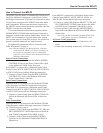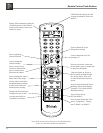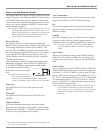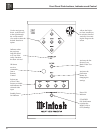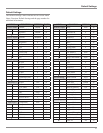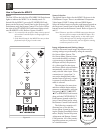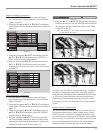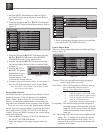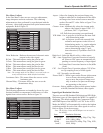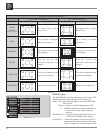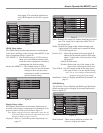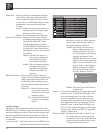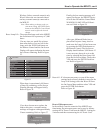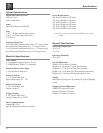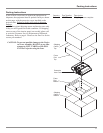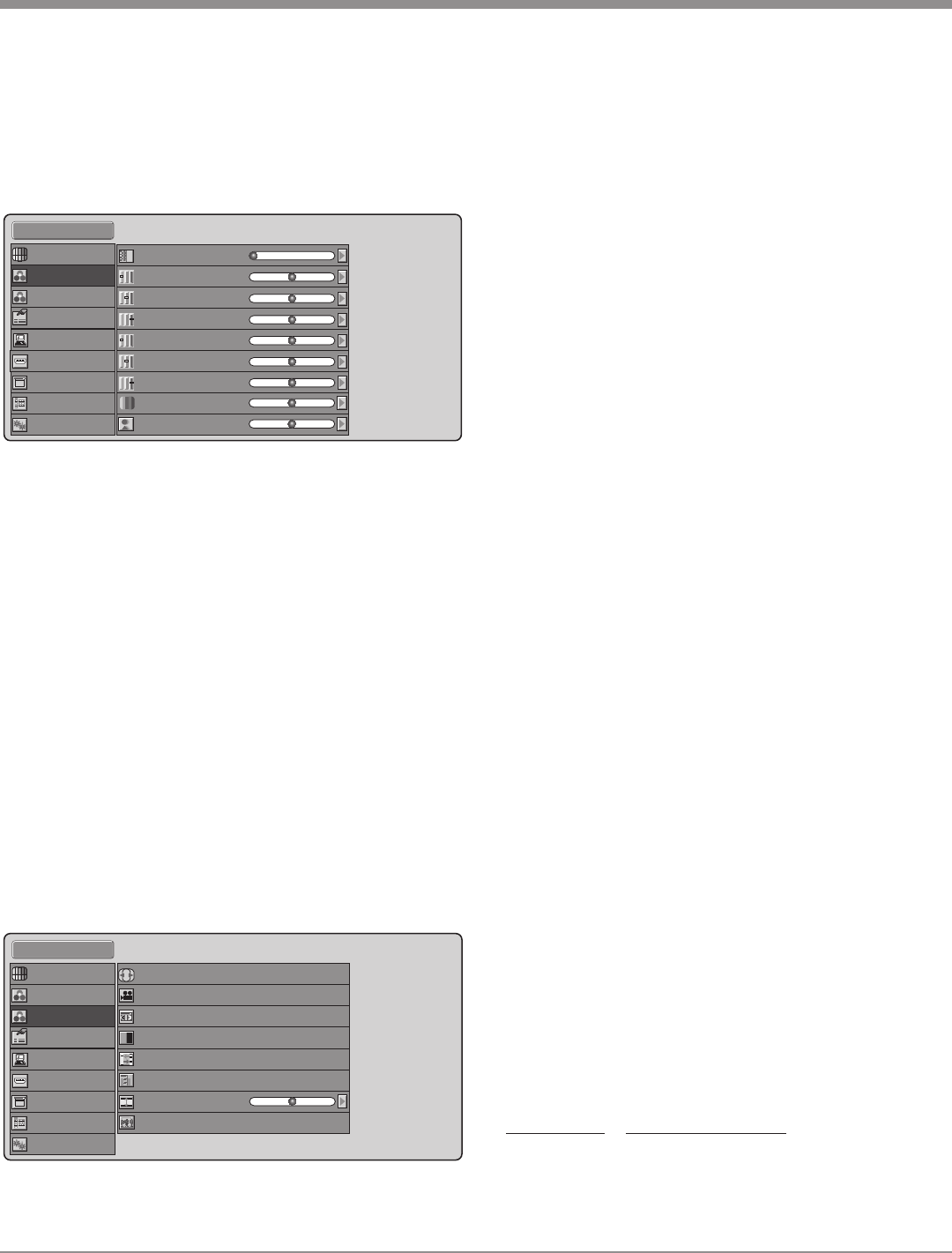
25
How to Operate the MDLP2, con’t
Fine Menu 1 Adjust
In the Fine Menu 1 there are two user type adjustments,
image sharpness and noise reduction. The remaining
adjustments are best performed by a professional with the
necessary video signal generators and optical measurement
equipment. Refer to figure 25.
Noise Reduction - Reduces the amount of electronic noise
present in the video signal.
R Gain - This menu allows setting the gain for red.
G Gain - This menu allows setting the gain for green.
B Gain - This menu allows setting the gain for blue.
R Bias - This menu allows setting the bias for red.
G Bias - This menu allows setting the bias for green.
B Bias - This menu allows setting the bias for blue.
Note : The settings made in Fine Menu 1 are saved in the cur-
rently selected Picture Mode (Default excluded).
Luminance Gain - This menu allows the users to set the
luminance gain.
Chroma Delay - This menu allows the users to set the
chrominance delay.
Fine Menu 2 Adjust
The following adjustment are intended to be use by a pro-
fessional installer to compensate for differences in video
signals from various sources. Refer to figure 26.
Standard 1
Noise Reduction
R Gain
G Gain
B Gain
0
0
R Bias
G Bias
B Bias
0
0
0
0
0
Fine Menu 1
Fine Menu 2
Input Signal
RGB/HD Adjust
Display
OSD/Blanking
Config.
HDMI
Picture Adjust
0
0
Luminance Gain
Chroma Delay
Figure 25
Aspect - Allows for changing the projected image size
height to width ratio to compensate for the differ-
ent image sizes from various sources materials
such as film and TV video. Refer to figure 27 on
the next page.
Cinema - Auto: Automatically selects the cinema mode
when a video signal is input. NTSC: 3-2
pull down, PAL: 2-2 pull down.
Off: Pull-down processing is not performed.
VCR Mode - On: A projector is forced into the intra-field
only deinterlacing mode.
Off: A projector is used with external field
memories and operates in the full set of
deinterlacing modes, i.e., motion adaptive
video deinterlacing and full frame film
source deinterlacing using 3:2 pull-
down detection (2:2 pulldown for 625/50
sources).
Black level - Select the black level by a video source.
FRC - Auto: Frame Rate Conversion function is basically
off. However FRC turns on automatically de-
pending on vertical frequency of input signal.
On: Frame Rate Conversion function is On (60Hz
fixed).
CEC - On: Chroma Error Correction reduces CUE (Chro-
ma Up-sampling Error) of 1080i signals.
Off : Normally, use this mode.
Picture Shift V - When Aspect on the Picture Adjust menu
is set to Zoom, this setting allows the
user to move the projected image verti-
cally in order to see parts on the image
not appearing on the screen.
Overscan - Selects whether to show or hide picture borders
with SD (Standard Definition) video signals.
Input Signal Resolution Selection
There are several SD (Standard Definition) and HD (High
Definition) types of video signals the MDLP2 is capable of
displaying. The default setting for the Component Video
and HDMI Inputs of the MDLP2 is AUTO. In the AUTO
Mode, the MDLP2 will automatically switch to the highest
resolution possible for each of the video signals it receives.
Refer to figure 28 on the next page.
Note: The S-Video, Video and RGB Inputs are not used on
the MDLP2.
Item Resolution Selection
Component Auto, 480i/576i, 480p, 540p, 576p, 720p
1 and 2 1035i, 1080i, 1080p
HDMI Auto, 480i/576i, 480p, 576p, 720p, 1035i,
1 and 2 1080i, 1080p
Standard 1
Cinema Auto
0
Picture Shift V
Overscan
Fine Menu 1
Fine Menu 2
Input Signal
RGB/HD Adjust
Display
OSD/Blanking
Config.
HDMI
Picture Adjust
Enable
FRC Auto 1
CEC Off
VCR Mode
Black Level
On
0 IRE
Aspect Full
Figure 26



